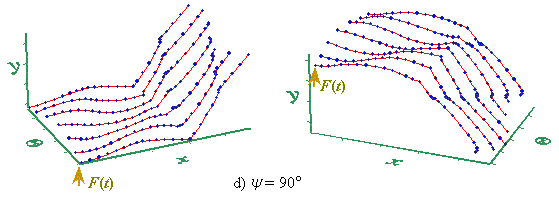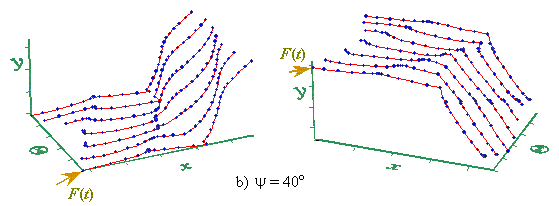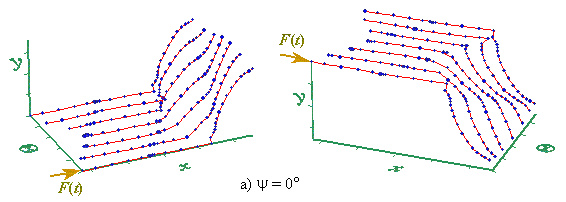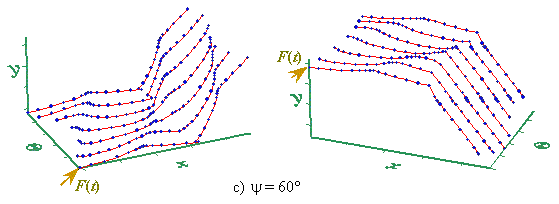
Fig. 11. The typical diagrams of vibrations in a
homogeneous elastic 1D lumped system with respect to the external force momentary phase  and
external force inclination angle and
external force inclination angle  to the axis x, with the bend angle to the axis x, with the bend angle  equal to 60░ and
-60░ and with the ratio of transverse stiffness to that longitudinal equal to 2,5 equal to 60░ and
-60░ and with the ratio of transverse stiffness to that longitudinal equal to 2,5
|
In Fig. 11 one of typical patterns of vibration process is
shown for the positive and negative bend angles  dependently on the direction of external force
affection. It is visual that with quite small before-the-bend vibration amplitudes, in the
bend region there forms a complicated vibration process with the inflections (Fig. 11 b,
c), with breaking of the wave process continuity being generally different for the
positive and negative bend angles and relating geologically to the charriages, and when
excess of the rock strength – to the faults. The wave process amplitude depends
essentially on the external excitation frequency and the bend angle. Particularly, in
complete correspondence to Haug’s description given in the introduction, the steeper
the mountain range inflects and the closer to the normal the front of coming seismic wave
is, the faster amplitude grows when passing through the bend. dependently on the direction of external force
affection. It is visual that with quite small before-the-bend vibration amplitudes, in the
bend region there forms a complicated vibration process with the inflections (Fig. 11 b,
c), with breaking of the wave process continuity being generally different for the
positive and negative bend angles and relating geologically to the charriages, and when
excess of the rock strength – to the faults. The wave process amplitude depends
essentially on the external excitation frequency and the bend angle. Particularly, in
complete correspondence to Haug’s description given in the introduction, the steeper
the mountain range inflects and the closer to the normal the front of coming seismic wave
is, the faster amplitude grows when passing through the bend. |



